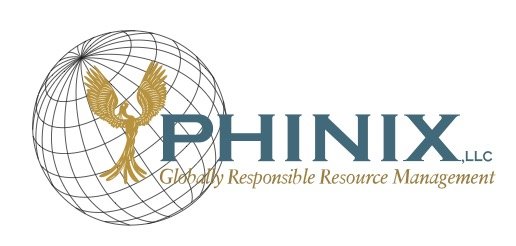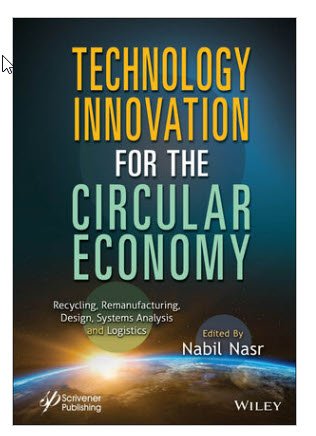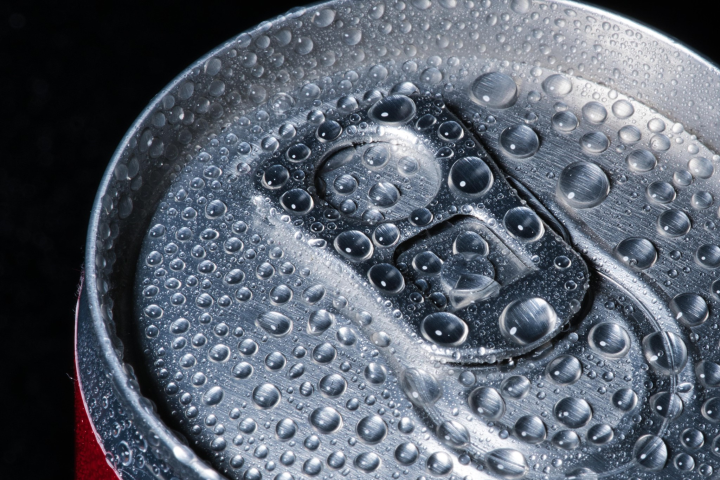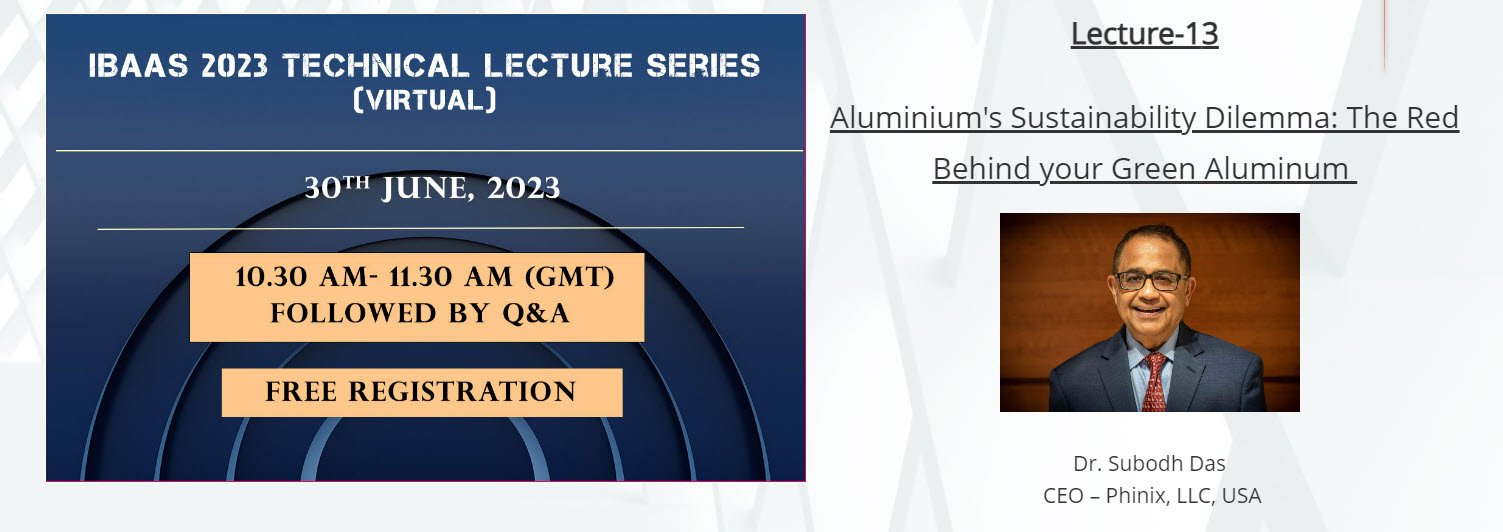News & Announcements
JOM August 2025: Refining Techniques to Upgrade Aluminum Scrap
Influence of Si, Mn, and Cr on the Iron Removal from Aluminum Scrap: A Thermodynamic and Experimental Analysis
Digging for Gold in Trash: Startup Revives Buried Recyclables to Power the Circular Economy
With recycling rates for aluminum cans dropping to around 43%, a staggering 57% end up in landfills. Quad R Materials’ landfill reclamation solution addresses this issue head-on, combining excavation, shredding, and advanced sorting to funnel materials back into the circular economy .
Image by: Evgeny Karchevsky @kor4insky
Tariffs, imports and recycling: How 2025 could unfold for US aluminum - Recycling Today, April 1, 2025
The country has entered another year with diverse challenges and opportunities for the aluminum industry.
Commentary piece by Dr. Subodh Das
Recycling Today - February 21, 2025
Commentary: Increasing aluminum recycling can decrease aluminum imports by Dr. Subodh Das
While announcing his 25% tariffs on imported steel and aluminum, President Trump said, "Our nation requires steel and aluminum to be made in America, not in foreign lands."
We agree, strong domestic production of steel and aluminum is important for national security reasons. We have the potential to substitute a major chunk of our imports through recycling, especially used beverage can (UBC) recycling, which is a textbook example of aluminum’s recyclability.
We must remember that tariffs and recycling are interconnected. While we are “moving the earth and heaven” to minimize the negative effect of tariffs on our industry, I believe we need to “move the earth” to increase UBC recycling rates from 43 % to an achievable 75%.

Latest developments in Low-Carbon Aluminum Products
Latest developments in Low-Carbon Aluminum Products
Light Metal Age, February 2025. Authored by Dr. Subodh Das
Discover the latest advancements in low-carbon aluminum in Dr. Subodh Das' article for Light Metal Age, February 2025 edition. As the industry moves toward net-zero emissions by 2050, this piece explores the growing demand, evolving technologies, and market trends shaping the future of sustainable aluminum production. Read more about how innovative solutions and key industry players are driving the transition to a cleaner, circular economy. Read the full article here.
Image by Artem Stoliar @tioma_st
Phinix, LLC Starts REMADE Project to Commercialize Removal of Fe and Mn from Aluminum Scrap Melts
Global Aluminium Producers on a Decarbonisation Pathway - article by Dr. Subodh Das. Published by Aluminium International Today, Nov/Dec 2024.
A circular economy for metals is vital to achieving sustainability.
The Bridge, Volume 54, No. 2 - Summer 2024, the National Academy of Engineering (NAE)
Technology Innovation for the Circular Economy: Recycling, Remanufacturing, Design, System Analysis and Logistics
The book documents the comprehensive discussions and findings from a conference organized by the REMADE Institute in Rochester, NY, which brought together a diverse group of U.S. and international stakeholders including researchers, engineers, technologists, and policymakers to delve into the circular economy. It spans 56 chapters across 10 parts, covering a wide array of research and practical applications within the circular economy, including system-level approaches, models, and the integration of technologies such as AI and machine learning. Key topics include advancements in mechanical and chemical recycling technologies, which represent some of the leading-edge research in these fields. Additionally, significant innovations in remanufacturing and tire remanufacturing and recycling are discussed, showcasing cutting-edge techniques in handling large volumes of end-of-use materials. The final sections of the book explore pathways to achieving net-zero emissions in materials manufacturing, emphasizing the role of industrial decarbonization in moving towards a more sustainable economic model.
Title : Removal of Iron and Manganese Impurities from Secondary Aluminum Melts Using Microstructural Engineering Techniques - M.K. Sinha, B. Mishra, J. Hiscocks, B. Davi, S.K. Das, T. Grosko and J. Pickens
(Chapter 36, Page 463)
An article on decarbonisation in the metals industry including two largest sectors - steel and aluminum published by Recycling Today. Thank you DeAnne Toto, Media Group Editorial Director, Recycling Today for including my opinion and insights.
The U.S. Department of Energy (DOE) announced the appointment of 18 science, business, academic, and industry leaders to the Industrial Technology Innovation Advisory Committee (ITIAC) to help decarbonize America’s industrial sector.
Dr. Subodh Das is 1 of 18 members to the new ITIAC to help decarbonize America’s industrial sector.
ITIAC is a federal advisory committee whose members will report directly to the U.S. Secretary of Energy with a comprehensive strategy to accelerate the development of technologies and processes that will reduce emissions across the U.S. industrial sector and move the nation closer to a net-zero emissions economy by 2050.
Learn more about ITIAC and its members:
Economic analysis of precious metal recovery from electronic waste through gas-assisted microflow extraction
The recycling of end-of-life electronic products is motivated by the enormous investment of resources in their creation and the environmental concerns associated with electronic waste (e-waste). It is envisioned that this study may establish a paradigm for making economically-informed decisions for sustainable technologies.
This paper was co-authored by Dr. Das.
Mechanism and kinetic study of rare earth extraction from allanite by direct acid leaching
The experiment focused on recovering rare earth elements (REEs) from allanite ore through direct acid leaching. Results showed that using 1 M sulfuric acid (H2SO4) at 75°C for 2 hours extracted approximately 80% of the REEs, with temperature having a significant impact on extraction efficiency. Electron microscopy revealed that the leaching process affected the crystal structure minimally, and kinetic modeling suggested a mixed control mechanism involving both chemical reaction and diffusion.
This paper was co-authored by Dr. Das.
Growing Aluminum Rolling Capacity in the U.S. to Boost Raw Material Demand
Article by Dr. Subodh Das, published in Light Metal Age, December 2023.
Greenfield rolling capacity expansion in the U.S. is important to the North American market, considering the growing demand from the automative and packaging sectors. The industry however, needs to work towards securing the raw material supply chain for the more than 752,000 tpy of new rolling sheet output coming online in the next few years.
Phinix, LLC, awarded a $1.8 million (over 2 years) by REMADE
Project Lead: Phinix, LLC
Partner Organizations: Worcester Polytechnic Institute (WPI), Kingston Process Metallurgy, Smelter Services Corporation, Audubon Metals, Real Alloys, Spectro Alloys Corp.
Description: This project seeks to develop processes to remove Fe and Mn from molten aluminum scrap, allowing it to be recycled more easily. As the world's largest aluminum scrap exporter, the U.S. has enormous potential to develop a circular economy for aluminum and lower aluminum products' energy and emissions profile.
LANDFILL MINING: THE UNTAPPED SOURCE FOR ALUMINUM AND ITS RELEVANCE IN THE U.S.
Why is landfill mining more relevant for the United States? Because the U.S. is one of the leading consumers of aluminum. This is a country, which produces more than one hundred billion aluminum cans per year and consumes one can per day for every American. Although our domestic recycling has improved and enabled a large market for secondary aluminum as an industrial feedstock, the overall amount of recycling is still relatively low. The U.S. has been burying aluminum cans in landfills since the time Coors launched their aluminum beer cans in 1959.
I had a good conversation with Julio Quintero Cadavid, an aluminum enthusiast who hosts Dirty Scrap - a podcast discussing everything aluminum.

The Carbon Footprint of Recycled or Secondary Aluminum
August 2023
Click to download paper
Dr. Das’ interview with AI Circle, August 2023
Aluminum’s Sustainability Dilemma: The Red Behind Your Green Aluminum























